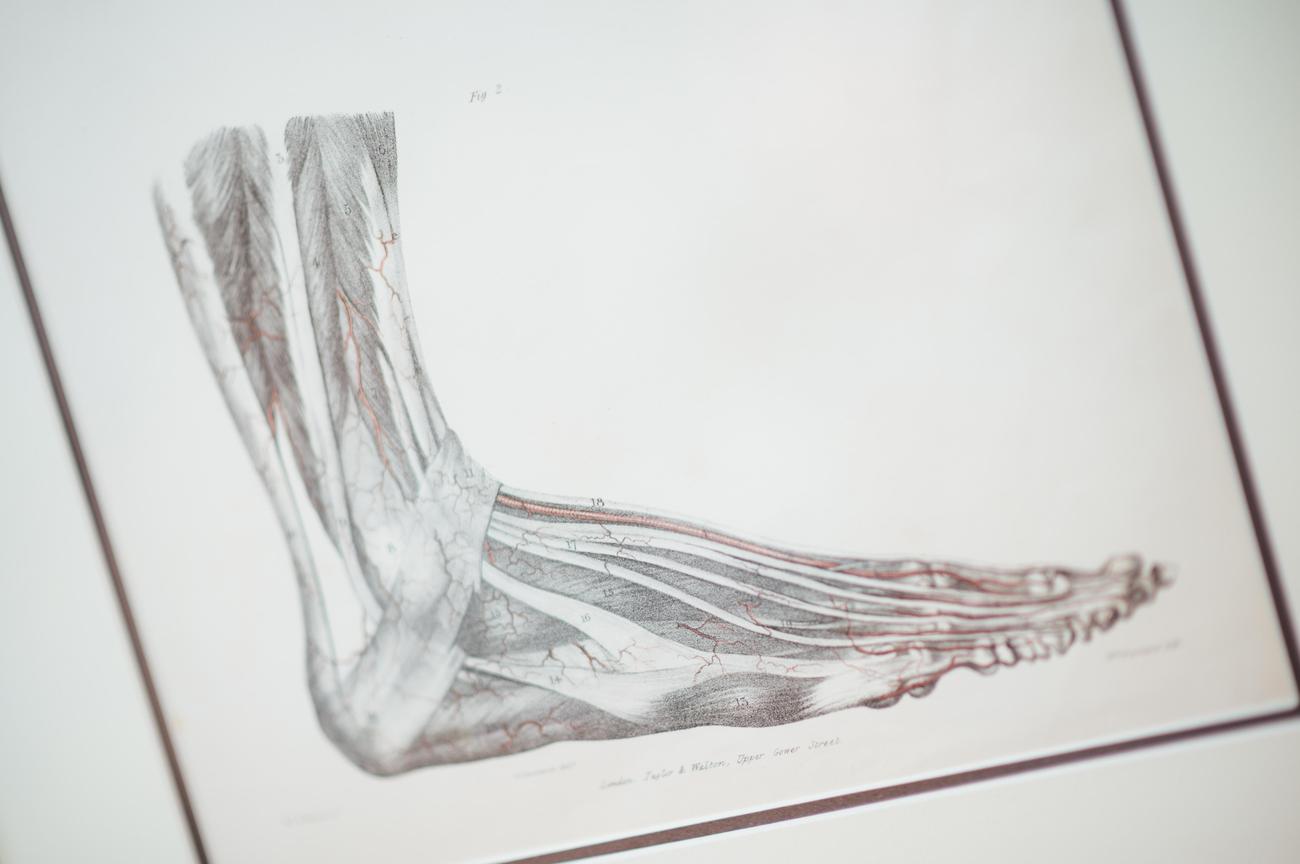Are you ready to take a journey into the intriguing world of the neck? In this article, we will uncover a treasure trove of fun facts about this often overlooked part of our body. From the remarkable structure of the cervical vertebrae to the surprising abilities of our neck muscles, get ready to be amazed by the wonders that lie just below your chin. So, sit back, relax, and prepare to dive into a world of neck-cessities as we explore the fascinating and enlightening realm of the neck!

Fun Facts About The Neck
The neck is an amazing part of the human body that often goes unnoticed, yet plays a crucial role in our daily lives. Let’s dive into some interesting and fun facts about the neck that will surely leave you amazed!
First and foremost, did you know that the neck is responsible for connecting our head to the torso? It acts as a bridge, supporting the weight of our head and allowing us to move it in different directions. Without the neck, our head would be left floating in space!
Now, let’s talk about the cervical spine, which is an essential component of the neck. This spine consists of seven vertebrae, which are small bones stacked on top of each other. These vertebrae not only provide support but also protect the delicate spinal cord that runs through them. The cervical spine truly is a remarkable structure!
Moving on, the neck acts as a conduit for various vital structures. It houses important blood vessels that supply oxygen and nutrients to our brain. In addition, the trachea, or windpipe, allows air to pass through our neck and into our lungs, while the larynx, or voice box, enables us to produce sound. The neck also serves as a pathway for the esophagus, through which food travels from our mouth to our stomach. It’s incredible how all these structures align perfectly in such a small space!
Let’s not forget about the muscles of the neck, which are responsible for its movement and stability. These muscles can be classified into two main groups: the anterior triangle and the posterior triangle. The anterior triangle consists of suprahyoid muscles, located above the hyoid bone, and infrahyoid muscles, positioned below it. Together, these muscles ensure that our neck can perform its wide range of functions, from turning our head to maintaining proper head position.
Now, here’s a fascinating fact: did you know that the neck is a pivotal area for assessing the lymphatic system? Lymph nodes, which play a crucial role in our immune response, are scattered throughout the neck. By examining the neck for swollen or tender lymph nodes, healthcare professionals can gather valuable information about potential infections or diseases in the head and neck region. It’s truly remarkable how the neck can provide a window into our overall health!
Moving on to another intriguing fact, let’s talk about the phrenic nerve. This nerve originates in the neck and travels down to the diaphragm, which is our primary breathing muscle. The phrenic nerve plays a vital role in innervating the diaphragm, allowing us to breathe effortlessly. It’s incredible how something as small as a nerve in the neck can impact our entire respiratory system!
Now, let’s shift gears and discuss some interesting statistics. Neck pain is a common complaint, with millions of people experiencing it at some point in their lives. Whether it’s caused by poor posture, muscle strain, or underlying conditions, neck pain can be quite bothersome. However, with proper care and treatment, it can often be alleviated, allowing us to get back to our everyday activities. It’s important to pay attention to our necks and address any discomfort early on.
Lastly, let’s explore a fun fact that highlights the unique characteristics of the neck. Did you know that a giraffe’s neck can reach a staggering length of around 1.5-1.8 meters? Surprisingly, despite this extraordinary length, a giraffe’s neck contains the same number of vertebrae as a human’s neck, which is seven. It’s truly astonishing how evolution has shaped the necks of different species in such diverse ways!
To sum it all up, the neck is a fascinating part of the human body that often goes unnoticed. From its intricate structure of vertebrae and muscles to its role in supporting vital structures and facilitating movement, the neck is truly a marvel. So, the next time you turn your head or feel a slight discomfort in your neck, remember these fun facts and appreciate the wonders of this remarkable body part.
“Unlock the wonders hidden within your neck and embrace the power it holds!”
The human spine is an incredible structure that plays a vital role in our overall well-being. Have you ever wondered how it functions or what makes it so unique? If you’re ready to uncover some fascinating facts, click here for a journey into the world of fun facts about the spine. Your spine will thank you!
Fun Facts About The Neck
Have you ever wondered about the hidden wonders of the neck? Brace yourself for some spine-tingling revelations! Let’s start by unraveling some interesting facts about cervical vertebrae. Did you know that the neck is composed of seven small bones? These vertebrae, situated between the skull and the upper back, are responsible for supporting and protecting the spinal cord. To explore more captivating details about this crucial part of our body, click here: Interesting facts about cervical vertebrae.
Now, let’s delve into the fascinating world of neck muscles! Did you know that there are over 30 muscles working together in perfect harmony to provide us with neck movement and stability? These incredible powerhouses ensure that our neck can rotate, flex, and extend with ease. To uncover intriguing trivia about these neck muscles, click here: Fascinating trivia about neck muscles.
But wait, there’s more! Brace yourself for some surprising information about neck movement. Have you ever marveled at the flexibility of the neck, enabling us to turn our heads in various directions? The versatility of neck movement allows us to observe our surroundings and engage with the world around us. To discover more surprising facts about this incredible feature of our neck, click here: Surprising information about neck movement.
So, whether you’re interested in the intricacies of cervical vertebrae, the awe-inspiring capabilities of neck muscles, or the mind-boggling range of neck movement, we’ve got you covered with these captivating articles. Quieten the curious whispers in your mind and quench your thirst for knowledge by clicking these links. Get ready to embark on an enlightening journey through the fascinating world of the neck!
The Consequences of Cracking Your Neck: A Shocking Tale of Morbid Fatalities
[youtube v=”wEbPYDTc5sQ”]
The Dumbest Ways to Die
In the pursuit of comfort or out of sheer habit, many of us have engaged in the seemingly harmless act of cracking our necks. A simple twist, a satisfying crack, and often a fleeting sense of relief. However, what if cracking your neck had the potential to lead to a tragic and untimely demise? Prepare for a chilling account of real-life incidents that highlight the hidden dangers lurking within this seemingly innocent action.
Crimes and Catastrophes
In 1880, the unthinkable unfolded in Thailand. The Queen’s boat, en route to her Palace, tragically capsized. The shocking part? Despite the presence of numerous witnesses, not a single soul dared to rescue the drowning Queen and her daughter. The reason behind this horrifying hesitation lies in an archaic law that deemed any physical contact with the Queen as a crime punishable by death. This spine-chilling incident serves as a haunting reminder of the dire consequences that can accompany even the faintest touch to one’s regal highness.
Moving forward in time, we encounter the tale of Bobby Leach, a renowned daredevil who defied the odds and successfully descended Niagara Falls in a barrel. However, fate had a twisted sense of humor. Just a few short years later, Bobby met his end in the most mundane and unexpected way. Slipping on a humble orange peel, he suffered a vicious infection that swiftly claimed his life. A remarkable reminder that it is often the most trivial incidents that can seal our fates in unimaginable ways.
A Deadly Twist of Fate
In 1996, Michael Paul’s life took a tragic turn during an ordinary Sunday routine. Upon leaving church, he decided to indulge in his habitual neck-cracking ritual. Little did he know that this seemingly innocuous action would set off a chain of events that would culminate in his untimely death. Within minutes, profuse sweating and a pallid complexion overcame him, leaving him in a state of distress. Rushed to the nearest hospital, it was already too late. Michael slipped into a coma, and after 12 agonizing days on life support, he succumbed to his fate.
An autopsy performed after his passing revealed the shocking truth behind this inexplicable tragedy. The act of cracking his neck had damaged a crucial artery supplying blood to his brain, triggering a fatal stroke. An unforeseen consequence of a habitual habit, forever altering the lives of those who knew Michael.
“The consequences of seemingly harmless actions can be truly devastating.”
Unveiling the Vulnerabilities of the Neck
These harrowing tales not only astound but also beckon us to delve deeper into the intricacies of the neck. This vital yet vulnerable region holds the weight of our heads while protecting the delicate spinal cord. It serves as a conduit for crucial blood vessels, the trachea, larynx, and esophagus. Inhabited by muscles that allow for movement and stability, the neck is an indispensable part of our anatomy.
While we often associate cracking our necks with momentary relief, these stories remind us of the potential dangers that lurk within. The neck, with its complex network of arteries and nerves, is not impervious to harm. A seemingly innocuous action can potentially lead to catastrophic consequences.
The Hidden Perils Within
One particular danger lies within the intricate web of arteries that supply blood to the brain. Twisting or jolting the neck can inadvertently damage these vital pathways, leading to severe repercussions such as strokes. Furthermore, by manipulating the neck, we risk aggravating existing conditions, triggering neck pain, discomfort, or even more severe disorders.
“The consequences of neck cracking can transcend momentary relief, unveiling a world of hidden perils.”
Learning from Tragic Histories
As we reflect upon these somber accounts, we are reminded of the fragility and resilience of the human body. Our actions, no matter how innocuous they may seem, possess the potential to shape our fates in unimaginable ways. The tales of Thailand’s drowning Queen, Bobby Leach’s fatal misstep, and Michael Paul’s tragic death all serve as harrowing reminders that life can be as precariously ephemeral as it is resilient.
With each cracking of our necks, let us remember the untold tales of those who suffered before us. May their stories serve as cautionary whispers, imploring us to be mindful of the hidden perils they encountered so tragically.
“In the realm of cracking necks, whispered tales of tragedies past remind us of the fragility and resilience of the human body.”

FAQ
Question 1: How many vertebrae are there in the cervical spine?
Answer 1: The cervical spine, which is located in the neck region, consists of a total of seven vertebrae.
Question 2: What are the functions of the neck muscles?
Answer 2: The neck muscles have several functions, including enabling us to turn our heads, supporting the position of the head, and providing stability to the neck.
Question 3: What structures can be found in the neck?
Answer 3: The neck serves as a conduit for important structures such as blood vessels, the trachea, the larynx, and the esophagus.
Question 4: Are there different categories of neck muscles?
Answer 4: Yes, the neck muscles can be categorized into the anterior and posterior triangles. The anterior triangle muscles are further grouped into suprahyoid and infrahyoid muscles.
Question 5: How long is a giraffe’s neck and how does it compare to a human neck?
Answer 5: A giraffe’s neck is approximately 1.5-1.8 meters in length, which is considerably longer than a human neck. Interestingly, both a giraffe’s and a human’s neck contain the same number of vertebrae.
- Unlock Elemental 2 Secrets: Actionable Insights Now - April 2, 2025
- Lot’s Wife’s Name: Unveiling the Mystery of Sodom’s Fall - April 2, 2025
- Photocell Sensors: A Complete Guide for Selection and Implementation - April 2, 2025
















